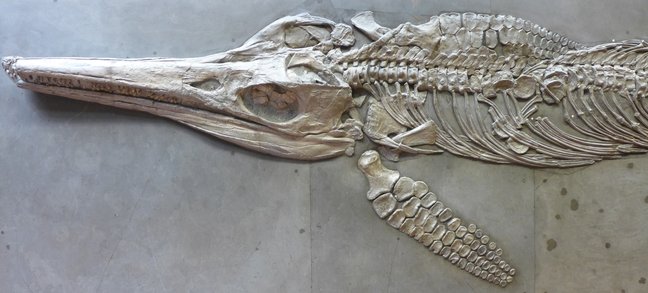Ichthyosaurs are probably one of the most important groups of extinct marine reptiles. Despite decades of research however, many questions about their ecology remain unanswered – including the diet of these predators, which were up to ten meters long. It is precisely this topic that a team led by paleontologist Dr. Erin Maxwell has now addressed with the help of CT scans and scanning electron microscopy.
A closer look at the shape of the teeth helps to understand how they were used many millions of years ago and which type of prey they were used on. Depending on the type of prey, specially shaped teeth were required. In Temnodontosaurus, whose numerous species lived in southern Germany around 180 million years ago, the team discovered an unexpected variety of tooth shapes. Very unusual for animals at the top of the food chain, the different species of Temnodontosaurus probably used different hunting strategies on different types of prey. This allowed the predators to coexist in the same habitat and avoid food competition. This adaptation was probably just one of many factors that allowed this group of marine reptiles to dominate our oceans for over 150 million years.
